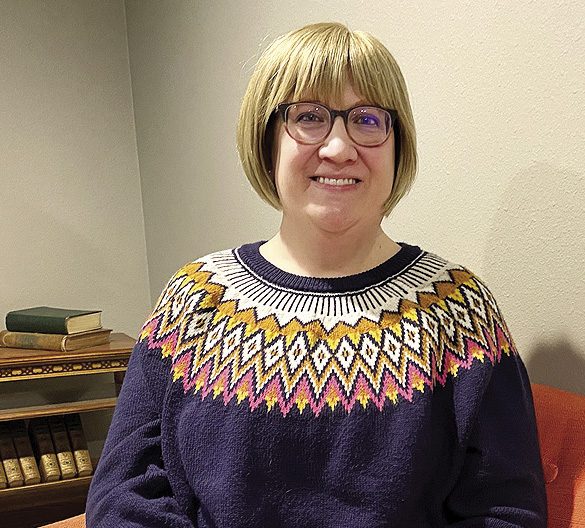
Tracy librarian Val Quist is filling
a big need as the City’s grant writer
By Per Peterson
Val Quist is not your ordinary small-town librarian, sitting behind a desk for eight hours a day and hushing patrons during their search for books.
Quist, Tracy’s library director since the summer of 2014, moonlights as the City of Tracy’s go-to grant writer — an often overlooked position, but one vital to any city’s quest to improve what they have to offer current residents and attract new ones.
“I’m not an expert at it; I’m still learning every day about what different agencies want from us,” said Quist.
Quist really dove into grant writing during the height of the pandemic, when the library, along with other facilities, had to shut down for a time. At that time, Quist was working from home and was asked by Tracy City Administrator Erik Hansen to look into some historic grants for downtown Tracy and perhaps City Hall.
The Tracy City Council last year approved an addition to Quist’s hours as a City employee — bumping her from 32 hours to 40 hours a week to give her ample time to focus on grant writing. Grant writing, Quist said, is not as easy as one might think and can be rather time consuming.
“A lot of it is just figuring out what someone wants to hear and telling them that,” Quist said. “It sounds simple, but you have to figure out what they want from you. And you can’t just say that you’re going to do this or that, you have to actually make it happen. It’s not just, ‘Will you please give us this money to do this project,’ you have all the follow-up to do.”
Quist said the grant writing process doesn’t end once the request is submitted; there is also plenty of paperwork after the fact, and grant writing can vary depending on what organization the request is going to.
“You have grant agreements, and you have to submit all the paperwork after, which is worse than writing the grant itself,” she said. “There’s a lot that goes into it. If we’ve got a strong narrative, that part of it is pretty easy, but you have to tell them what the cost is of operating something for the next five years.”
See this week’s Headlight Herald for more on this article.
